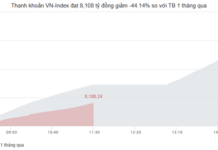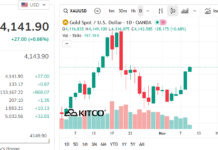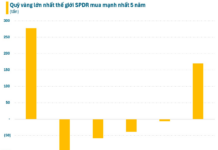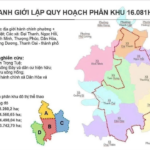Proposal to Lower Personal Income Tax Threshold to 25%
Simplified Progressive Tax Scale from 7 to 5 Brackets
The Ministry of Finance has recently released a summary of opinions, feedback, and explanations regarding policy contributions from various agencies, organizations, localities, associations, and individuals for the draft Law on Personal Income Tax (amended). The Ministry reported receiving a total of 382 submissions, with significant attention given to adjustments in tax rates and threshold reductions.
In the latest draft of the Law on Personal Income Tax (amended), the Ministry of Finance has proposed to the Government a simplified progressive tax scale, reducing the brackets from 7 to 5. Additionally, the taxable income thresholds have been expanded compared to current levels. Under this proposal, after deducting personal allowances, an employee with a taxable monthly income of 10 million VND would pay a 5% tax rate. Incomes between 10 million and 30 million VND would be taxed at 15%, incomes from 30 million to 60 million VND at 25%, incomes from 60 million to 100 million VND at 30%, and the maximum tax rate of 35% would apply to taxable incomes exceeding 100 million VND per month.
According to the Ministry of Finance’s calculations, adjusting the tax scale as proposed would result in a budget revenue reduction of approximately 8.74 trillion VND.
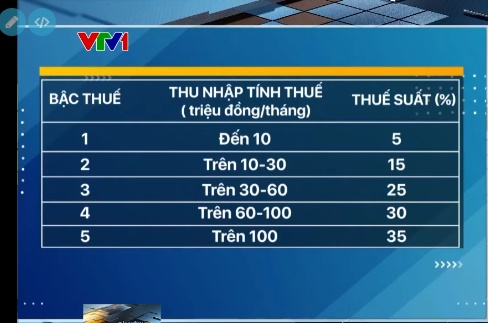
Proposal to Lower Personal Income Tax Ceiling to 25%
In the summary of feedback for the draft Law, many associations, agencies, and organizations appreciated the simplification of the tax system from 7 to 5 brackets, making it easier to calculate. However, they suggested widening the gaps between brackets and reducing the maximum tax rate from 35% to 25% to enhance regional competitiveness and attract high-quality talent.
Ms. Vũ Thị Thúy Hằng, a technology sector worker from Đa Phúc Commune, Hanoi, expressed concern that a 35% tax rate could diminish work motivation. She noted that higher earnings result in proportionally less take-home pay, while living costs continue to rise.
“A 35% rate is quite high. High-quality workers might seek opportunities abroad, leading to a brain drain. I believe capping it at 25-30% would be more reasonable,” Ms. Hằng commented.
Representatives from Deloitte Vietnam highlighted that Vietnam’s personal income tax rates are among the highest in Southeast Asia, despite having a relatively low taxable income threshold.
Ms. Vũ Thu Hà, Deputy General Director of Tax Advisory Services at Deloitte Vietnam, stated, “Thailand also applies a 35% rate but starts at an annual income of 3.7 billion VND. Singapore’s maximum rate is 24%, applicable only to incomes exceeding 20 billion VND annually. Malaysia caps its highest rate at 30%, starting at 1.6 billion VND. These comparisons show that Vietnam taxes higher and earlier than other countries, potentially impacting talent retention.”
Therefore, many contributors to the draft Law on Personal Income Tax (amended) proposed eliminating the 35% bracket and lowering the ceiling to 25%. Notably, the Nghệ An Provincial National Assembly Delegation suggested reducing tax rates across brackets to ensure a maximum of 25%, encouraging taxpayer compliance. The Sơn La Provincial National Assembly Delegation called for an assessment of the impact of the 30% and 35% brackets, given their high rates.
Furthermore, World Bank data indicates that Vietnam’s GDP per capita increased from 20.9 million VND in 2009 to nearly 114 million VND in 2024, a 5.4-fold rise. However, while the 35% tax rate in 2009 applied to incomes above 80 million VND, the Ministry of Finance now proposes raising this threshold to only 100 million VND, a mere 25% increase.
In 2009, a bowl of pho cost around 15,000–20,000 VND. Today, prices have doubled or tripled. Yet, after 17 years, the proposed income threshold for the highest tax rate has only increased by 25%. This disparity underscores the need for tax policy adjustments to align with current living standards.
Ms. Bùi Thị Lệ Phương, Director of Centax Accounting and Tax Consulting Company, remarked, “I believe the 35% rate should apply to incomes of 120–150 million VND, with wider bracket intervals to better suit reality. This would encourage high-income earners to voluntarily comply with tax obligations.”
Additionally, many pointed out that the proposed 5-bracket scale features abrupt rate increases. The second bracket jumps to 15%, triple the first bracket’s 5% rate. This could strain workers reliant solely on wages or salaries.
Proposal to Raise Personal Allowance to 16–20 Million VND
Another key area of feedback in the draft Law on Personal Income Tax (amended) is the personal allowance. Recently, the Ministry of Finance proposed raising the personal allowance to 15.5 million VND per month and the dependent allowance to 6.2 million VND per month, based on a 40% increase in GDP per capita from 2020 to 2024.
Many contributors suggested increasing the personal allowance beyond the proposed 15.5 million VND per month.
The Ministry of Finance noted widespread support for raising the personal allowance from 11 million VND to 15.5 million VND per month and the dependent allowance from 4.4 million VND to 6.2 million VND per month, reflecting a 40.9% increase. This adjustment is based on income and GDP per capita growth from 2020 to 2024.
This proposal would reduce annual budget revenue by 21 trillion VND. Individuals earning 15.5 million VND monthly would be exempt from personal income tax after deductions for social insurance, health insurance, and unemployment benefits. However, many argue for further increases.
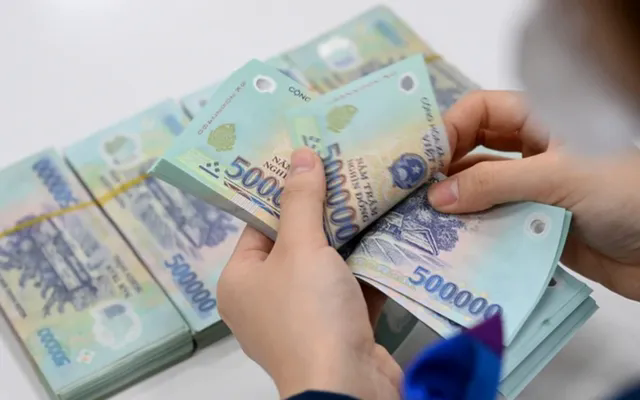
Many have called for raising the personal allowance beyond the proposed 15.5 million VND per month. Illustrative image.
With monthly rent at 6 million VND, utilities, and children’s education expenses, Ms. Chu Thị Huyền from Cầu Giấy District, Hanoi, spends over ten million VND before accounting for food. She believes the proposed allowance is only suitable for this year and may quickly become outdated.
“Vegetables that normally cost 10,000–15,000 VND per bunch can surge to 25,000–30,000 VND during storms, lasting weeks, not days. Meat, fish, and other essentials also rise by 15–20%. I hope the personal allowance can be raised to 17–18 million VND for direct workers and 7 million VND per dependent. This would help families save for a home instead of renting until retirement,” Ms. Huyền shared.
Mr. Tạ Công Minh, also from Cầu Giấy District, added, “I support raising the dependent allowance to over 7 million VND to ease the burden on families.”
Critics argue that the draft relies on 2024 GDP per capita projections. By 2025, GDP per capita is expected to increase by 50% compared to 2020. The Ho Chi Minh City National Assembly Delegation proposed raising the personal allowance to 16.5 million VND and the dependent allowance to 6.6 million VND.
The Điện Biên Provincial National Assembly Delegation suggested increasing the personal allowance to 20 million VND per month and the dependent allowance to 10 million VND, supporting households amid rising living costs and fostering sustainable tax revenue.
Experts note that the current Law only revises allowances when the Consumer Price Index (CPI) fluctuates by 20%, a process that can take years. While CPI tracks 752 goods and services, essential items—fewer than 20—often experience sharper price increases. Therefore, prices for vegetables, meat, and fish can rise faster than inflation. Some propose granting the Government authority to adjust allowances annually for flexibility.
Mr. Trần Anh Quân, an economic and financial expert, commented, “More frequent allowance updates, such as annually or biennially, would better protect workers from rising living costs.”
As prices for essentials like pho increase annually, the Law should incorporate mechanisms to adjust allowances in line with economic growth, preventing immediate obsolescence upon enactment.
The Ministry of Finance acknowledged the feedback and will refine the draft Law on Personal Income Tax (amended) for submission to the National Assembly in October. Beyond personal allowances, the Ministry proposes exploring additional deductions for education and healthcare expenses to reflect real-world needs.
Gold Transaction Tax: Are Wedding Gold Purchases Subject to Taxation?
Are you wondering if gold rings, classified as jewelry, are subject to taxation? Or perhaps you’re curious whether buying or selling wedding gold falls under taxable transactions?
Revised Title:
Amended Personal Income Tax Law: Does It Lack Support Mechanisms for Freelancers?
Taxpayers have expressed concerns regarding the proposed personal income tax (PIT) regulations, highlighting a lack of support mechanisms for freelancers. The current policy on taxing financial investment income remains unclear and lacks legal framework, posing potential risks for citizens. Additionally, the taxation of cryptocurrency assets continues to raise significant uncertainties.
Personal Income Tax on Gold Transactions: Can It Curb Speculation and Narrow Price Gaps?
After a series of price hikes, with a difference of approximately $1,700 per tael since the beginning of the year, gold has emerged as an attractive investment channel, offering lucrative returns. Experts support the proposal to impose personal income tax (PIT) on gold transactions. However, the implementation of this tax should follow a gradual roadmap, distinguishing between investment and accumulation activities to prevent any shock to the public.





